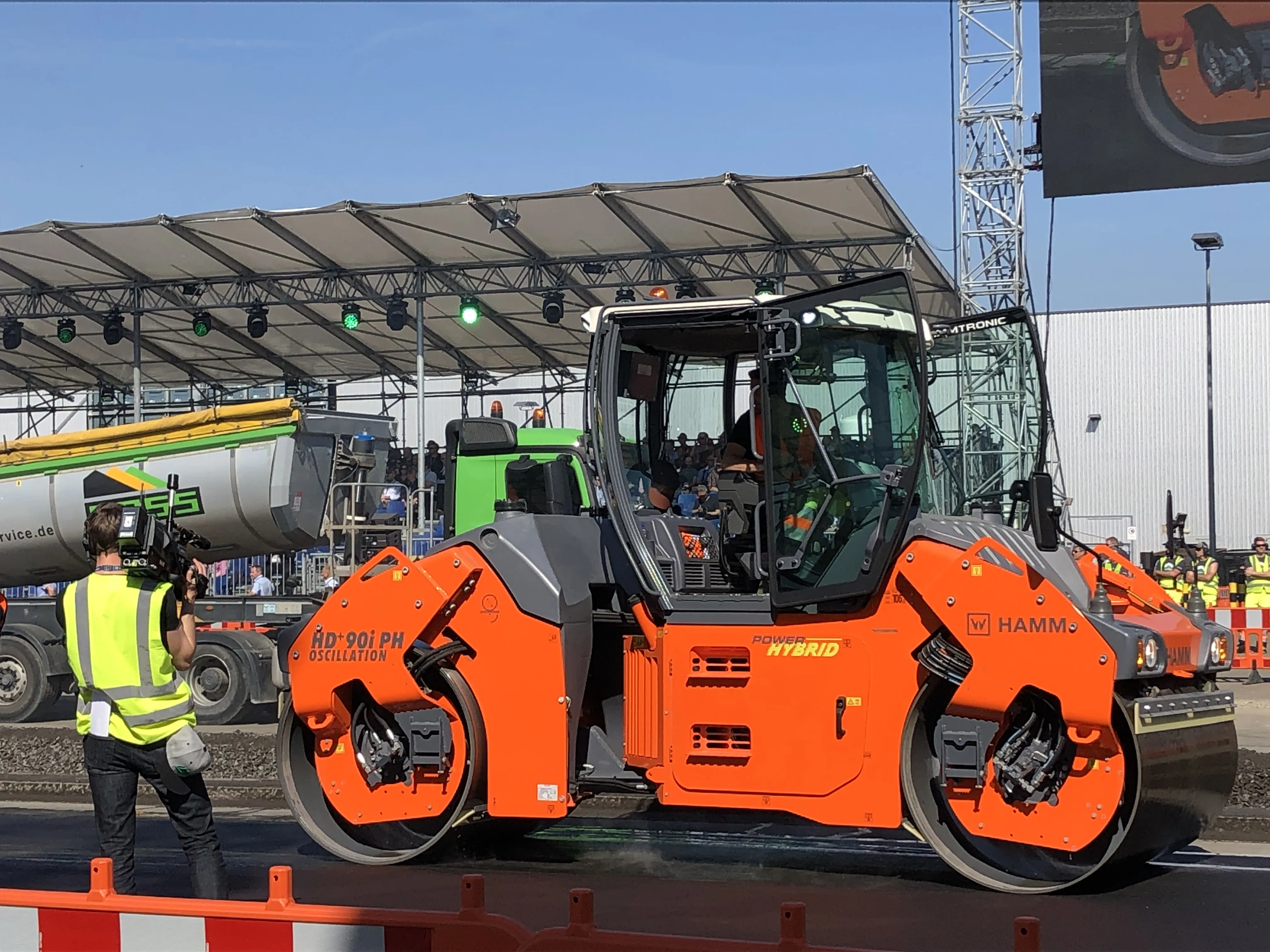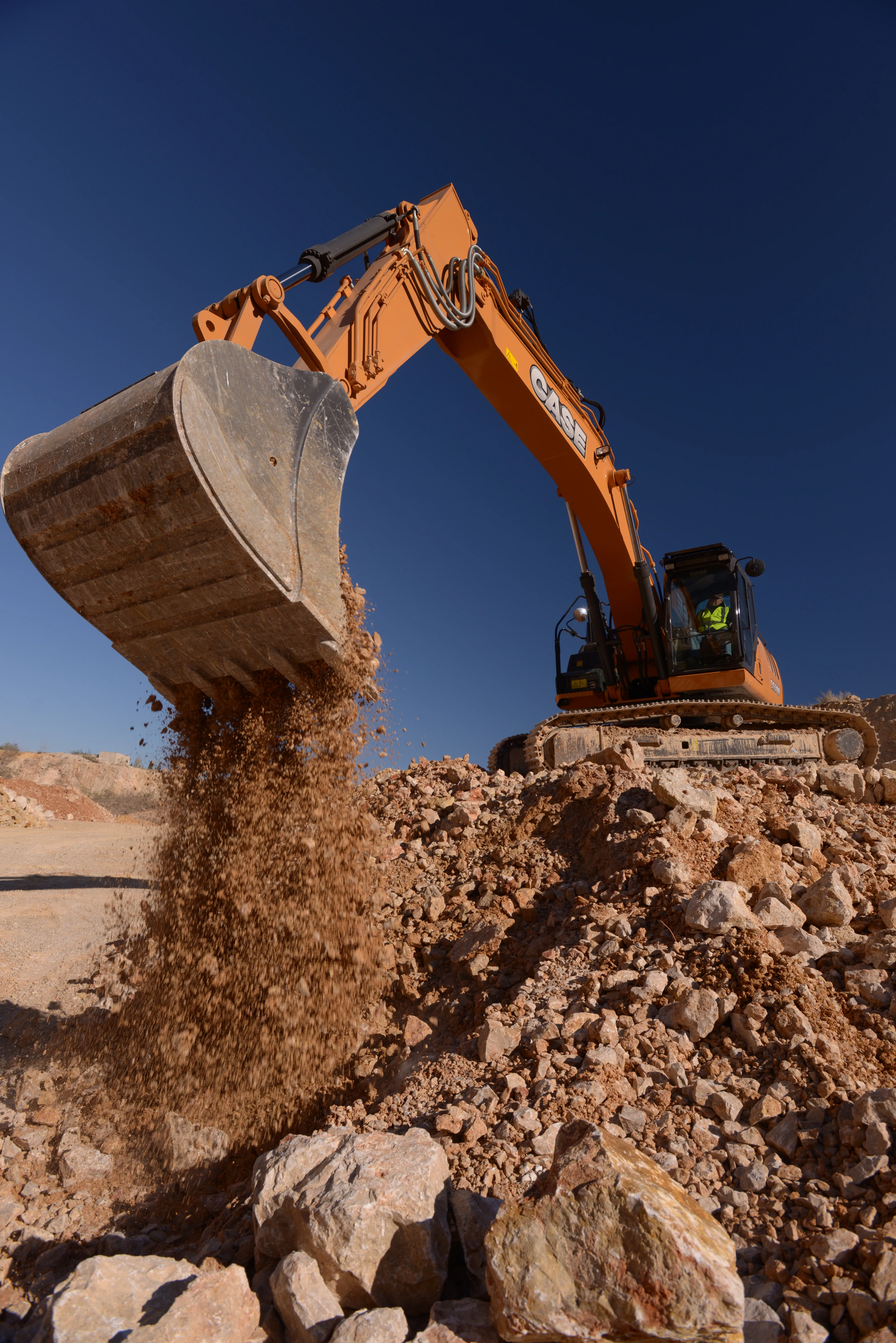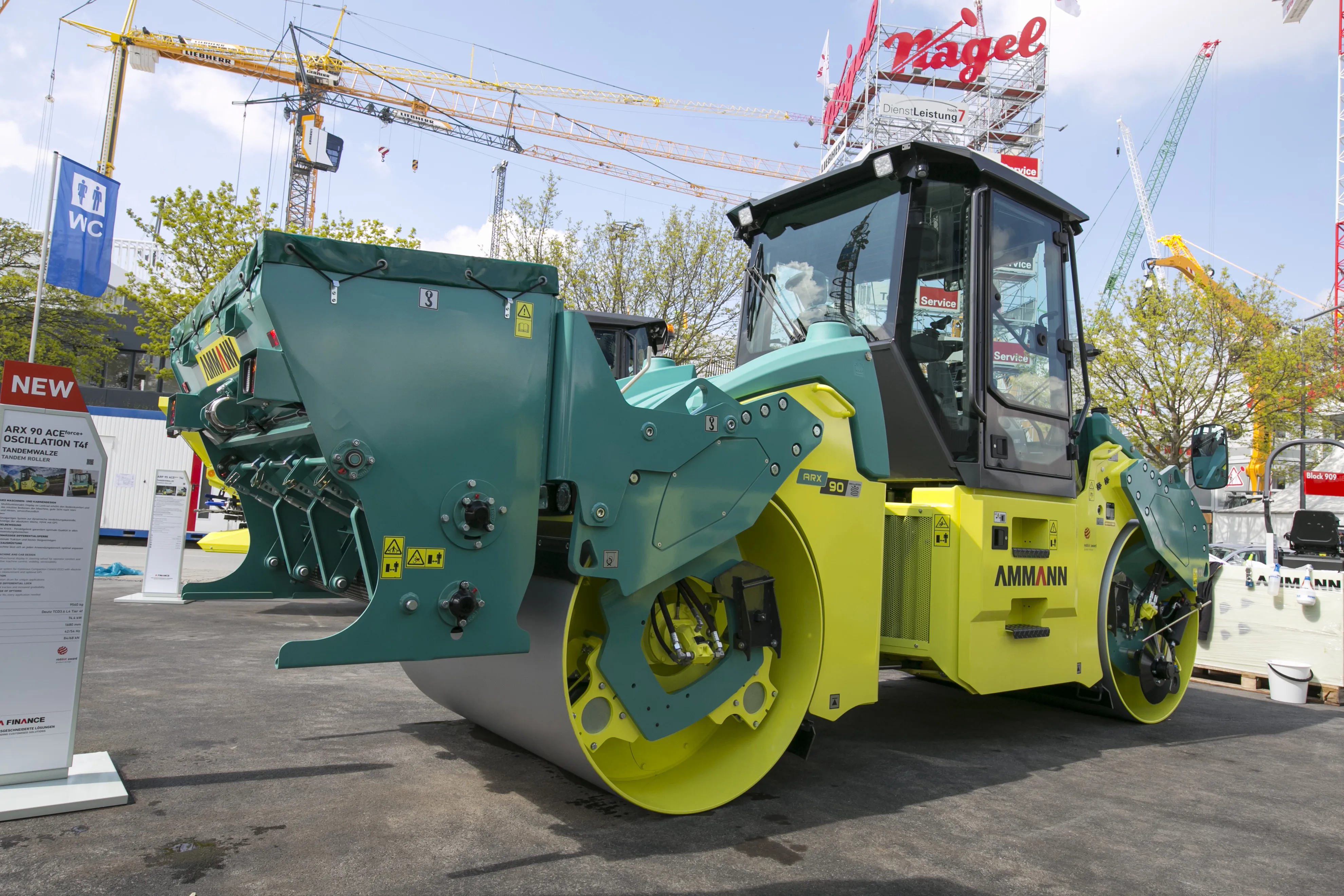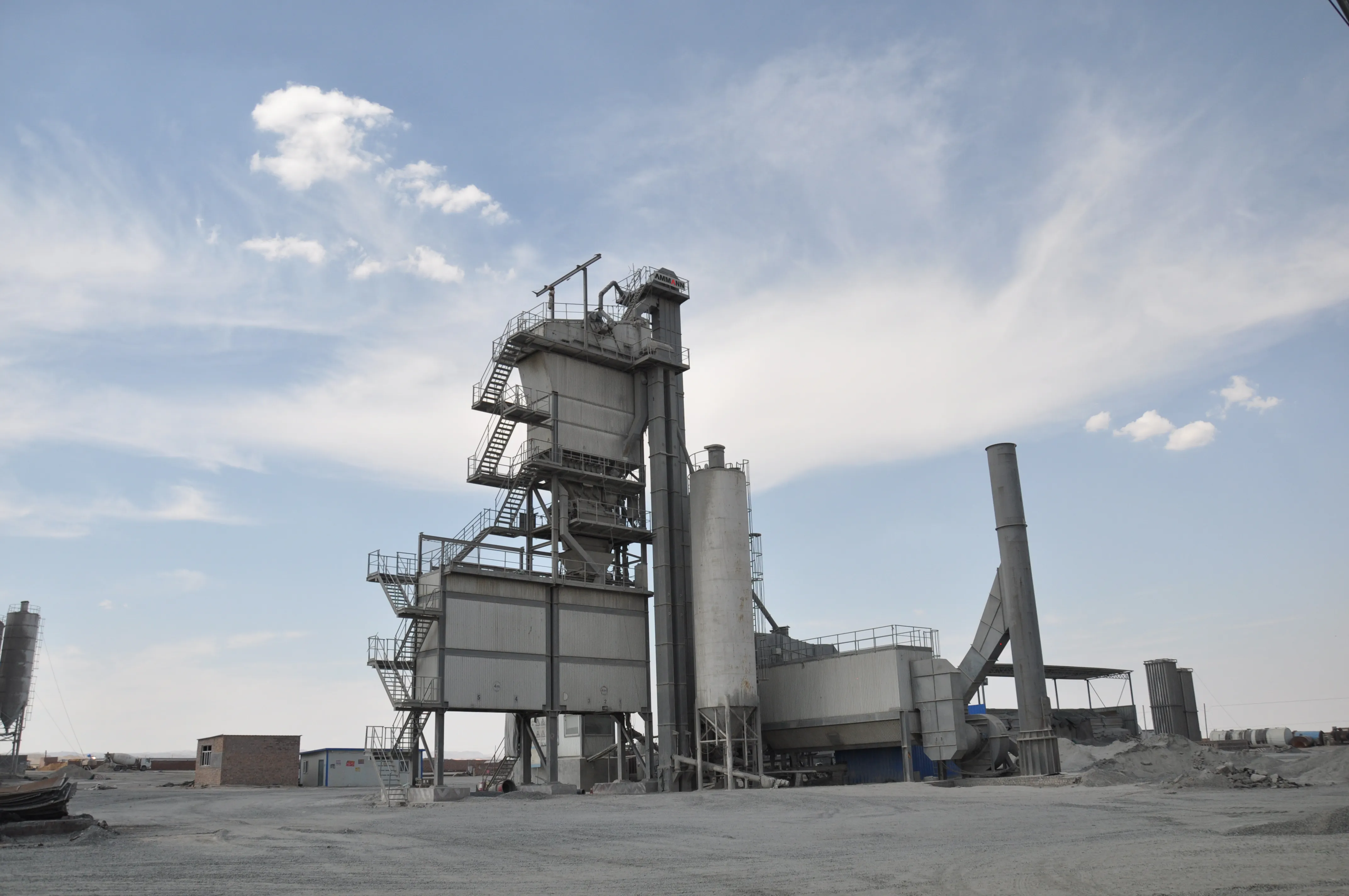
Hybrid solutions combine different technologies in a single system. In the case of cars, this generally means an internal combustion engine and an electric motor. However, Hamm has instead combined an internal combustion engine with a hydraulic system for the tandem roller.
Although the maximum load is regularly used while compacting, it is a few seconds at a time. This typically occurs when starting up or activating the vibration or oscillation, for example.
All other compaction tasks call for significantly less power. This allows Hamm to equip the roller with a smaller diesel engine in combination with a hydraulic accumulator to satisfy load peaks.
As soon as the power demand falls below the maximum load of the internal combustion engine, a pump fills the hydraulic accumulator. If a lot of power is called for, the hydraulic system functions as an auxiliary drive that supplies a maximum short-term load of up to 20kW.
Following this, the cycle begins afresh with the refilling of the accumulator. Maximum power is usually called up for only a few seconds after which there is sufficient time to replenish the accumulator.
Two other components of the HD+ 90i PH help ease the load on the diesel engine: an efficiency-optimised electric fan drive and an efficient start-stop system. This means that for the HD+ 90i PH a 55.4kW output engine suffices - instead of the 85kW unit in the conventional version.
Significantly quieter and with lower maintenance overheads are the result, according to Hamm.
During 2017, the 9-tonne roller with hybrid power train was put through its paces on numerous construction sites throughout Europe. These tests showed that handling and maintenance are simplified because the smaller engine does not require an SCR catalytic converter and, therefore, no AdBlue.
X-Head: Less fuel, but full compaction
The power hybrid roller was put to work with the Swedish construction company NCC over a number of months in 2017, racking up well over 500 operating hours in the process. Analyses revealed two important findings: Firstly, the PH roller invariably delivered the same compaction performance as its sibling model without hybrid technology. At the same time, NCC reported fuel savings of around 15%.
Trials in France with contractor Eiffage put the HD+ 90i PH to work on a range of urban and rural projects involving the compaction of differing asphalt types. Two experienced roller drivers agreed that they could detect no difference with the 85kW roller in respect of driving and compaction.
Hamm says that the number of standard variants of the HD+ 90i PH power hybrid roller offered by HAMM has by now grown to 6: with double vibration (VV), double vibration with split drum (VV-S), one oscillation and one vibrating drum (VO), one oscillation and one split vibrating drum (VO-S), as a combi roller (VT) and as a combi roller with split vibrating drum (VT-S).









